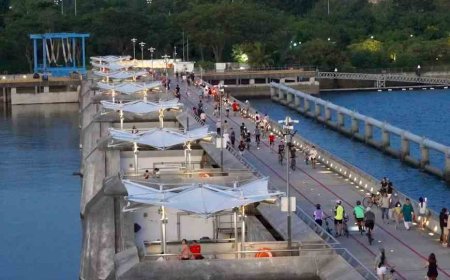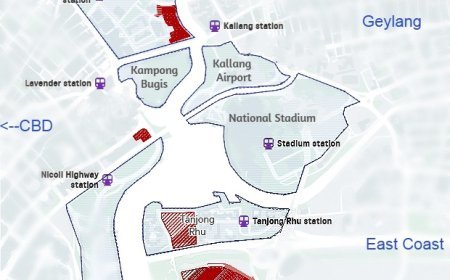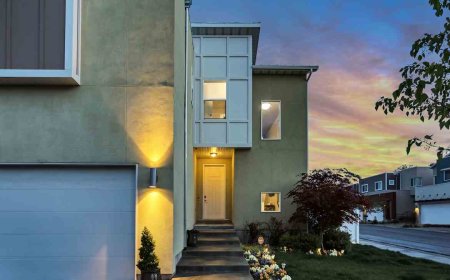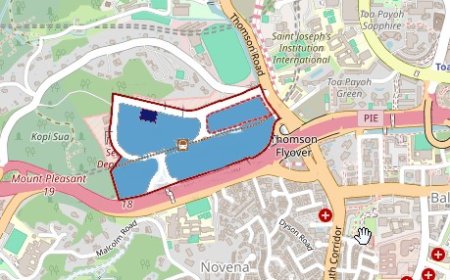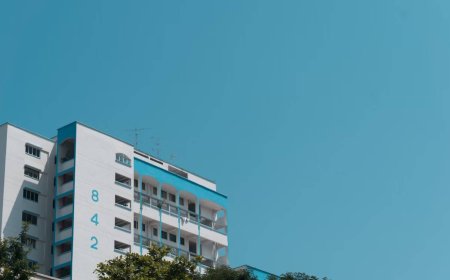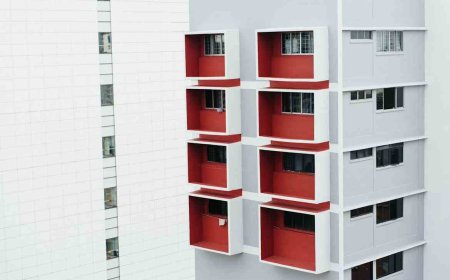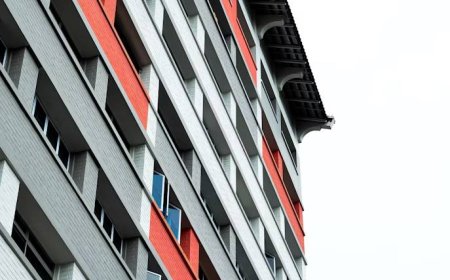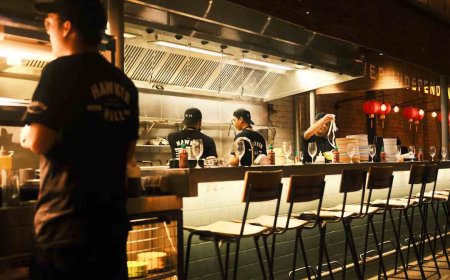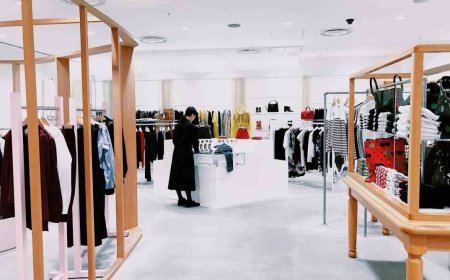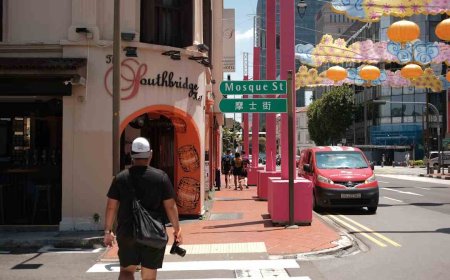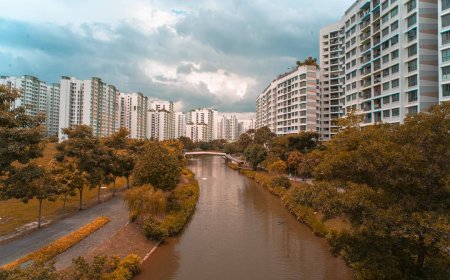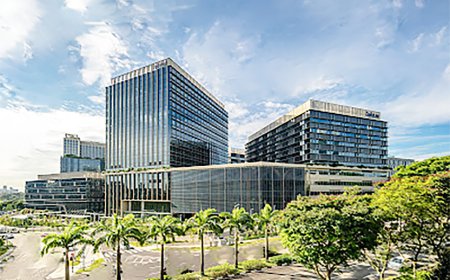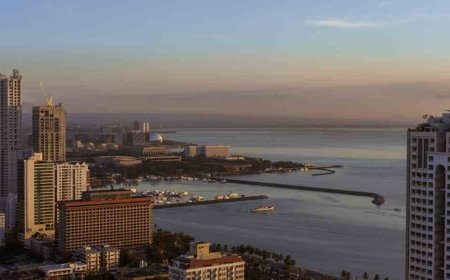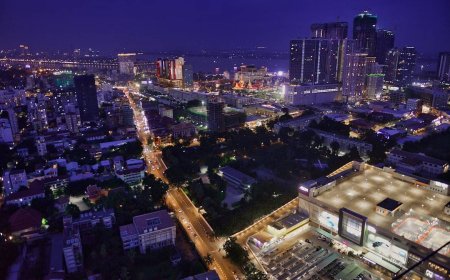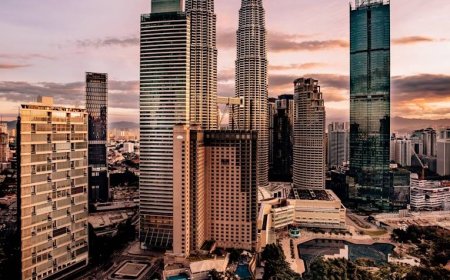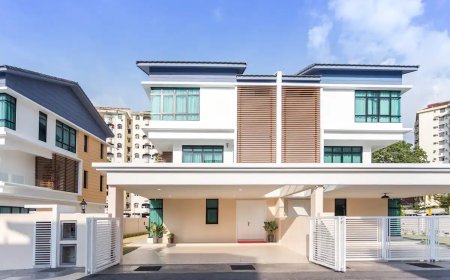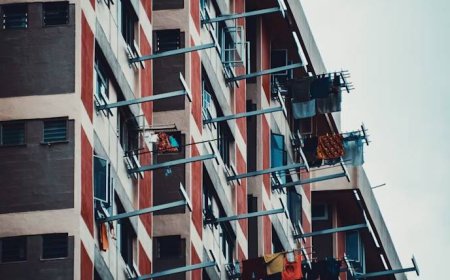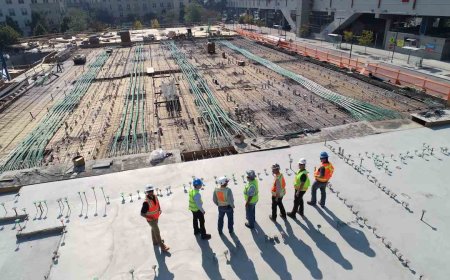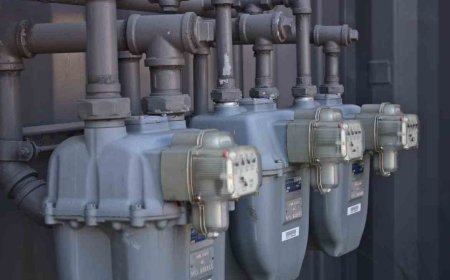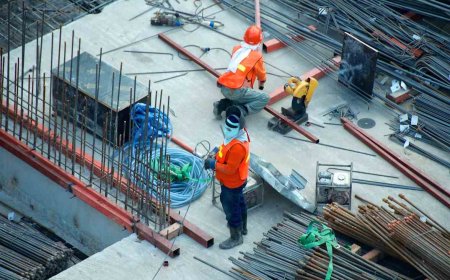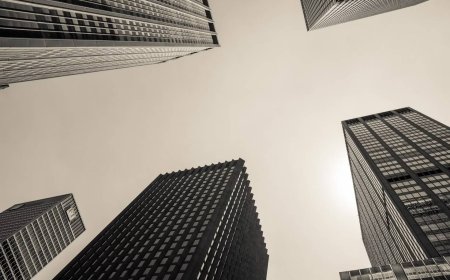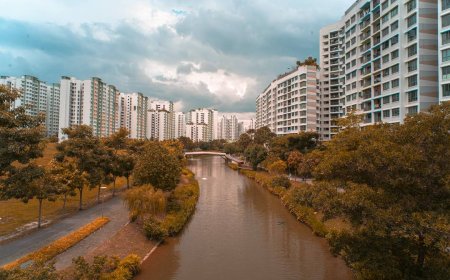Guide to Buying Commercial Property in Singapore
Comprehensive 2025 guide on buying commercial property in Singapore, covering property types, foreign ownership, legal requirements, taxes, step-by-step buying process, and investment tips.
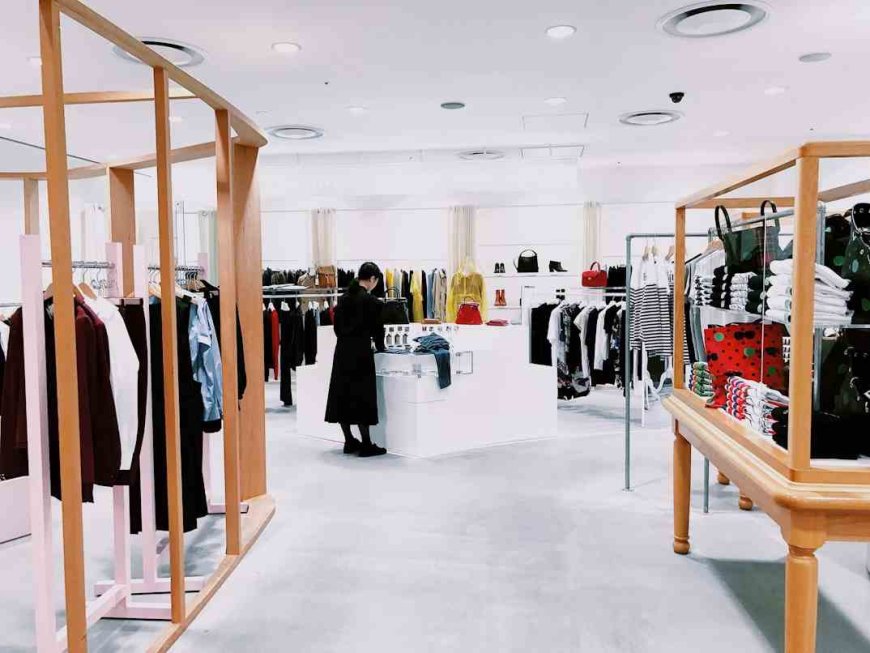
How to Buy Commercial Property in Singapore: The Complete 2025 Guide
Investing in commercial property in Singapore can be a highly lucrative way to diversify your portfolio and build long-term wealth. Known for its strong economy, political stability, and business-friendly regulations, Singapore offers investors opportunities across offices, retail, industrial spaces, hotels, and more. However, buying commercial property requires careful planning, adherence to local regulations, and understanding key financial and legal considerations.
This guide provides a step-by-step overview for both local and foreign investors, highlighting types of commercial property, eligibility rules, the buying process, financial implications, and practical tips.
1. Understanding Commercial Property in Singapore
Definition
Commercial property refers to real estate primarily used for business or investment purposes rather than residential living. In Singapore, land and properties are zoned into categories such as residential, commercial, industrial, and mixed-use, with specific regulations governing ownership, development, and usage.
Key Insight: Mixed-use properties—combining commercial and residential functions—are typically treated as residential for legal purposes. Foreign buyers need government approval before purchasing these, due to stricter foreign ownership rules for residential property.
2. Types of Commercial Property in Singapore
Commercial properties can be broadly classified into the following categories:
| Type | Examples | Key Notes |
|---|---|---|
| Office & Industrial | Office buildings, B1 warehouses, factories, B2 manufacturing sites | B1 for light industrial or office use; B2 for heavier industrial activities |
| Retail | Shops, restaurants, cafes, bars | Foot traffic and location are critical; prime retail areas command higher prices |
| Hotels & Hospitality | Hotels, hostels, serviced apartments | Subject to Hotels Act and licensing requirements |
| Shophouses | Heritage buildings with retail on the ground floor and commercial/residential above | Heritage and scarcity increase investment value |
| Medical Suites | Clinics and medical offices | Located near hospitals or residential areas; zoning restrictions may apply |
Example Scenarios:
-
Investor Perspective: A foreign investor buys a retail shop in Orchard Road to earn rental income from a high-footfall location.
-
Business Owner: A Singaporean entrepreneur acquires a B1 industrial unit for a light manufacturing startup.
-
Mixed Use Challenge: A foreign buyer interested in a shophouse with residential space above must secure government approval.
3. Where to Find Commercial Property
Before investing, research the market using:
-
Property portals and online listings
-
Real estate agencies specializing in commercial property
-
Government databases for zoning and property classifications
Tip: Track property trends over time to identify areas with strong growth potential and rental yields.
4. Eligibility & Legal Requirements for Foreigners
Foreigners can generally purchase the following commercial properties without special approval:
-
Shophouses approved for commercial use
-
Hotels and hostels
-
Industrial and commercial properties
Important Notes:
-
Mixed-use sites are usually considered residential; foreign buyers must obtain approval from the Singapore Land Authority (SLA).
-
Always verify property zoning with the Urban Redevelopment Authority (URA) and seek legal guidance before purchase.
5. Step-by-Step Buying Process
Buying commercial property involves multiple steps that require financial planning, legal diligence, and market research.
Step 1: Define Your Investment Goals
-
Are you buying for business operations or rental income?
-
Determine whether the property is a long-term investment or a short-term opportunity.
Step 2: Assess Your Financial Situation
-
Loan-to-Value (LTV) Ratio: Banks typically finance up to 80% for commercial property, requiring significant cash outlay.
-
Debt Servicing: Demonstrate the ability to service the loan without compromising financial stability.
-
Non-CPF Funding: CPF funds cannot be used for commercial property purchases.
Step 3: Engage Professionals
-
Hire a licensed commercial real estate agent for property search and negotiation.
-
Engage a conveyancing lawyer to handle due diligence, documentation, and legal checks.
Step 4: Search and Shortlist Properties
-
Review market trends and rental yields.
-
Check zoning, permissible uses, and potential for capital appreciation.
-
Consider foot traffic, accessibility, and surrounding amenities.
Step 5: Make an Offer and Secure an Option to Purchase (OTP)
-
Pay a non-refundable option fee (usually 1% of purchase price).
-
Option period typically lasts 14 days for financing and due diligence.
Step 6: Conduct Due Diligence
-
Legal searches for title, ownership, and encumbrances.
-
Survey the property to assess maintenance, structural integrity, and compliance.
Step 7: Exercise the Option and Pay Stamp Duties
-
Pay remaining deposit (usually 4% of purchase price).
-
Buyer’s Stamp Duty (BSD): Calculated on a progressive scale based on property price.
-
Goods & Services Tax (GST): Currently 9% for commercial property, payable on completion.
Step 8: Completion
-
Final payment and property transfer occur on the completion date, typically 8–12 weeks after exercising OTP.
6. Taxes and Fees to Consider
| Cost | Details |
|---|---|
| Buyer’s Stamp Duty (BSD) | Progressive rates: 1%–5% of purchase price depending on property value |
| Additional Buyer’s Stamp Duty (ABSD) | Not applicable for commercial properties |
| Property Tax | 10% of annual value (estimated gross rental income) |
| Goods & Services Tax (GST) | 9% of purchase price, payable in cash |
Tip: Always budget for legal fees, agent commissions, renovation, and maintenance costs in addition to taxes.
7. Pros and Cons of Commercial Property Investment
| Aspect | Commercial Property | Residential Property |
|---|---|---|
| Foreign Ownership | Allowed without ABSD on eligible properties | Restricted; ABSD applies |
| Loan Availability | Up to 80% LTV, non-CPF funding | Up to 90% LTV for locals, CPF eligible |
| Rental Income | Potentially higher yields in strategic locations | Stable rental, but capped yields |
| Market Risk | Dependent on business activity and economy | Dependent on housing market trends |
| Flexibility | Limited by zoning and permitted use | Can live in or rent out freely |
Key Takeaway: Commercial property can offer attractive returns and flexibility for business use, but involves higher upfront costs and legal complexity.
8. Practical Tips for Investors
-
Diversify Locations: Don’t concentrate all investments in one district.
-
Check Zoning Regulations: Ensure intended use aligns with URA zoning.
-
Professional Assistance: Use lawyers, surveyors, and agents to avoid costly mistakes.
-
Plan Cash Flow: Consider taxes, mortgage payments, maintenance, and potential vacancies.
-
Compare Yields: Evaluate rental income vs. purchase costs across multiple properties.
ROI and rental yields
| Property Type | Typical Purchase Price Range (SGD) | Average Rental Yield (%) | **Estimated ROI (Annual, %) ** | Investment Pros | Investment Cons |
|---|---|---|---|---|---|
| Office Spaces (CBD) | 2M – 20M+ | 3.5 – 5 | 4 – 6 | Prime location, strong corporate demand, potential capital appreciation | High purchase cost, sensitive to economic cycles |
| Suburban Offices | 1M – 5M | 4 – 6 | 4.5 – 6.5 | Lower entry cost, stable tenants | Limited capital appreciation, less prestige |
| Retail Shops (Prime Areas) | 1.5M – 15M | 4 – 6.5 | 5 – 7 | High footfall areas, potential for high rental | Dependent on consumer trends, risk of vacancy |
| Retail Shops (Suburban) | 800k – 3M | 5 – 7 | 5.5 – 7.5 | Lower purchase price, consistent demand | Limited capital growth, smaller rental market |
| B1 Industrial Units | 1M – 4M | 5 – 7 | 5 – 8 | Flexible usage, light industrial tenants, stable demand | Limited resale value, less attractive for prestige businesses |
| B2 Industrial Units | 2M – 6M | 4 – 6 | 4.5 – 6.5 | Suitable for manufacturing/logistics, good rental yields | Heavier maintenance, less liquidity |
| Shophouses (Heritage) | 2M – 10M+ | 3 – 5 | 4 – 6 | Heritage value, premium appeal, limited supply | High cost, restrictive regulations, maintenance costs |
| Hotels & Hostels | 5M – 50M+ | 6 – 8 | 5.5 – 8.5 | High rental returns, strong tourism demand | High upfront cost, sensitive to market fluctuations |
| Medical Suites | 1M – 4M | 4 – 6 | 4.5 – 6.5 | Stable tenants (clinics), essential services | Limited capital appreciation, zoning restrictions |
Key Insights from the Chart:
-
Retail and industrial properties tend to offer higher rental yields, particularly in suburban areas where purchase prices are lower.
-
Hotels and premium CBD offices provide strong long-term ROI but require substantial upfront investment.
-
Shophouses are scarce and appealing for prestige investors but come with regulatory and maintenance challenges.
-
Medical suites offer stable, long-term rental tenants but modest capital growth potential.
Comparison of Rental Yield vs Capital Appreciation Potential
| Property Type | Average Rental Yield (%) | Capital Appreciation Potential | Ideal Investor Profile | Notes / Example |
|---|---|---|---|---|
| CBD Office Spaces | 3.5 – 5 | High | Long-term investors, corporations | Located in prime financial districts; value grows with market demand for premium office space. |
| Suburban Offices | 4 – 6 | Moderate | Small-to-medium businesses, first-time investors | More affordable; rental yield is higher relative to price, but appreciation is slower. |
| Retail Shops (Prime) | 4 – 6.5 | High | Investors seeking prestige, long-term capital growth | High foot traffic areas; prime locations see strong price appreciation over time. |
| Retail Shops (Suburban) | 5 – 7 | Moderate | Cashflow-focused investors | Lower purchase price yields higher short-term rental income, but slower long-term appreciation. |
| B1 Industrial Units | 5 – 7 | Moderate | Investors seeking stable rental income | Light industrial tenants, long lease contracts. Price appreciation steady but limited by zoning. |
| B2 Industrial Units | 4 – 6 | Moderate | Industrial business owners | Suitable for factories or logistics; high maintenance may offset capital growth. |
| Shophouses (Heritage) | 3 – 5 | Very High | Prestige investors, niche collectors | Scarcity and heritage value drive strong long-term appreciation despite modest rental yield. |
| Hotels & Hostels | 6 – 8 | High | Investors seeking strong ROI and tourism exposure | Revenue depends on tourism cycles; prime locations offer both rental income and capital gains. |
| Medical Suites | 4 – 6 | Moderate | Investors seeking stable, recession-resilient tenants | Clinics provide reliable income; appreciation limited by building type and zoning. |
Example Investment Scenarios
-
Scenario 1: Cashflow-Focused Investor
-
Buys a suburban B1 industrial unit for SGD 2M, rents it out for SGD 120k/year.
-
Rental Yield: 6%; Appreciation Potential: Moderate.
-
Ideal for steady monthly income and low risk.
-
-
Scenario 2: Long-Term Wealth Builder
-
Buys a heritage shophouse for SGD 5M in Chinatown.
-
Rental Yield: 4%; Appreciation Potential: Very High.
-
Value grows significantly over 10–15 years due to scarcity and heritage appeal.
-
-
Scenario 3: Balanced Approach
-
Buys a CBD office unit for SGD 10M.
-
Rental Yield: 4.5%; Appreciation Potential: High.
-
Generates moderate income while benefiting from long-term appreciation in prime districts.
-
Key Takeaways
-
Singapore is a prime location for commercial property investment due to a strong economy and foreign investor incentives.
-
Foreigners can buy certain commercial properties without government approval, but mixed-use sites require permission.
-
Upfront costs are higher than residential property, but ABSD exemption and potential rental yields make commercial property attractive.
-
Step-by-step planning, professional guidance, and diligent research are crucial to a successful purchase.
Algene Toh
Disclaimer: The information presented on BSR2.com is intended for general informational purposes only. It does not constitute legal, financial, investment, or real estate advice and should not be relied upon as such. While every effort has been made to ensure the accuracy, reliability, and completeness of the content at the time of publication, all data is derived from publicly available sources and may be subject to change without notice. BSR2.com makes no representations or warranties of any kind, express or implied, regarding the suitability, timeliness, or accuracy of the information provided for any specific purpose. Users are strongly encouraged to seek independent advice from qualified professionals before making any decisions based on the content found on this website. BSR2.com shall not be held liable for any loss, damage, or consequence, whether direct or indirect, arising from the use of or reliance on the information provided. The content is intended as a general guide and does not take into account individual circumstances.
What's Your Reaction?
 Like
0
Like
0
 Dislike
0
Dislike
0
 Love
0
Love
0
 Funny
0
Funny
0
 Angry
0
Angry
0
 Sad
0
Sad
0
 Wow
0
Wow
0
